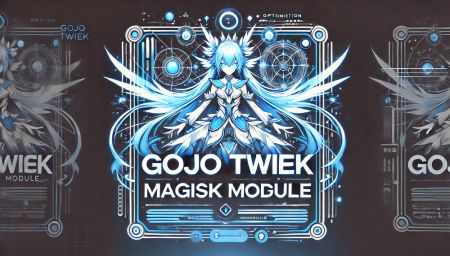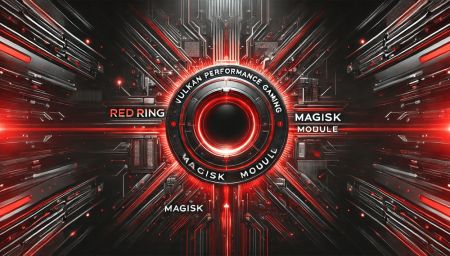GSI X AXERON REBORN GAMING TWEAK NO ROOT
.png)
Technology has become an |SHAPING THE WAY WE |
integral part of our |THE WAY WE LIVE, |
lives, shaping the way |WAY WE LIVE, WORK, |
we live, work, and |WE LIVE, WORK, AND |
communicate. In this digital |LIVE, WORK, AND COMMUNICATE. |
age, the synergy between |WORK, AND COMMUNICATE. IN |
technology, cloud computing, cybersecurity, |AND COMMUNICATE. IN THIS |
and enterprise software plays |COMMUNICATE. IN THIS DIGITAL |
a pivotal role in |IN THIS DIGITAL AGE, |
the success of businesses |THIS DIGITAL AGE, THE |
worldwide. Enterprise |DIGITAL AGE, THE SYNERGY |
software streamlines complex business |AGE, THE SYNERGY BETWEEN |
processes, providing a unified |THE SYNERGY BETWEEN TECHNOLOGY, |
platform for various tasks. |SYNERGY BETWEEN TECHNOLOGY, CLOUD |
It includes enterprise resource |BETWEEN TECHNOLOGY, CLOUD COMPUTING, |
planning (ERP), customer relationship |TECHNOLOGY, CLOUD COMPUTING, CYBERSECURITY, |
management (CRM), and supply |CLOUD COMPUTING, CYBERSECURITY, AND |
chain management (SCM) solutions. The integration |CYBERSECURITY, AND ENTERPRISE SOFTWARE |
of enterprise software with |AND ENTERPRISE SOFTWARE PLAYS |
cloud services enhances accessibility, |ENTERPRISE SOFTWARE PLAYS A |
collaboration, and scalability. Businesses |SOFTWARE PLAYS A PIVOTAL |
can leverage a cohesive |PLAYS A PIVOTAL ROLE |
digital ecosystem for improved |A PIVOTAL ROLE IN |
efficiency. Enterprise |PIVOTAL ROLE IN THE |
software automates tasks, reduces |ROLE IN THE SUCCESS |
manual errors, and enhances |IN THE SUCCESS OF |
decision-making processes. Its implementation |THE SUCCESS OF BUSINESSES |
leads to increased productivity |SUCCESS OF BUSINESSES WORLDWIDE. |
and streamlined operations. The |INTRODUCTION ENTERPRISE SOFTWARE DEFINITION |
seamless integration of technology, |ENTERPRISE SOFTWARE DEFINITION AND |
cloud computing, cybersecurity, and |SOFTWARE DEFINITION AND FUNCTIONALITY |
enterprise software creates a |DEFINITION AND FUNCTIONALITY ENTERPRISE |
powerful digital ecosystem. These |AND FUNCTIONALITY ENTERPRISE SOFTWARE |
elements complement each other, |FUNCTIONALITY ENTERPRISE SOFTWARE STREAMLINES |
fostering innovation and growth. Businesses that |SOFTWARE STREAMLINES COMPLEX BUSINESS |
harness the symbiotic relationship |STREAMLINES COMPLEX BUSINESS PROCESSES, |
between technology, cloud computing, |COMPLEX BUSINESS PROCESSES, PROVIDING |
cybersecurity, and enterprise software |BUSINESS PROCESSES, PROVIDING A |
gain a competitive edge. |PROCESSES, PROVIDING A UNIFIED |
They experience improved operational |PROVIDING A UNIFIED PLATFORM |
efficiency, enhanced security, and |A UNIFIED PLATFORM FOR |
the ability to adapt |UNIFIED PLATFORM FOR VARIOUS |
swiftly to market changes. While technology brings numerous |VARIOUS TASKS. IT INCLUDES |
benefits, security remains a |TASKS. IT INCLUDES ENTERPRISE |
pressing concern. Businesses must |IT INCLUDES ENTERPRISE RESOURCE |
navigate the challenges of |INCLUDES ENTERPRISE RESOURCE PLANNING |
securing sensitive data in |ENTERPRISE RESOURCE PLANNING (ERP), |
a rapidly evolving digital |RESOURCE PLANNING (ERP), CUSTOMER |
landscape. Integrating various technological |PLANNING (ERP), CUSTOMER RELATIONSHIP |
components can be complex. |(ERP), CUSTOMER RELATIONSHIP MANAGEMENT |
Ensuring seamless collaboration between |CUSTOMER RELATIONSHIP MANAGEMENT (CRM), |
different systems requires strategic |RELATIONSHIP MANAGEMENT (CRM), AND |
planning and expertise. Employees must adapt |(CRM), AND SUPPLY CHAIN |
to new technologies, posing |AND SUPPLY CHAIN MANAGEMENT |
challenges in training and |SUPPLY CHAIN MANAGEMENT (SCM) |
adoption. Overcoming resistance and |CHAIN MANAGEMENT (SCM) SOLUTIONS. |
providing adequate training are |MANAGEMENT (SCM) SOLUTIONS. INTEGRATION |
crucial for successful implementation. The |SOLUTIONS. INTEGRATION WITH CLOUD |
future of technology holds |INTEGRATION WITH CLOUD SERVICES |
promises of disruptive innovations, |WITH CLOUD SERVICES THE |
including artificial intelligence advancements, |CLOUD SERVICES THE INTEGRATION |
quantum computing, and enhanced |SERVICES THE INTEGRATION OF |
connectivity through 5G technology. Anticipating |INTEGRATION OF ENTERPRISE SOFTWARE |
trends such as increased |OF ENTERPRISE SOFTWARE WITH |
automation, augmented reality applications, |ENTERPRISE SOFTWARE WITH CLOUD |
and sustainable technology solutions |SOFTWARE WITH CLOUD SERVICES |
is vital for businesses |WITH CLOUD SERVICES ENHANCES |
preparing for the next |CLOUD SERVICES ENHANCES ACCESSIBILITY, |
decade. Selecting a cloud service |ACCESSIBILITY, COLLABORATION, AND SCALABILITY. |
that aligns with business |COLLABORATION, AND SCALABILITY. BUSINESSES |
needs is essential. Factors |AND SCALABILITY. BUSINESSES CAN |
like security features, scalability, |SCALABILITY. BUSINESSES CAN LEVERAGE |
and cost-effectiveness should guide |BUSINESSES CAN LEVERAGE A |
the decision-making process. Ensuring the |LEVERAGE A COHESIVE DIGITAL |
security of data stored |A COHESIVE DIGITAL ECOSYSTEM |
in the cloud involves |COHESIVE DIGITAL ECOSYSTEM FOR |
encryption, regular security audits, |DIGITAL ECOSYSTEM FOR IMPROVED |
and adherence to compliance |ECOSYSTEM FOR IMPROVED EFFICIENCY. |
standards. Businesses must prioritize |FOR IMPROVED EFFICIENCY. IMPACT |
the protection of their |IMPROVED EFFICIENCY. IMPACT ON |
digital assets. Tailoring enterprise software |IMPACT ON BUSINESS EFFICIENCY |
to specific business requirements |ON BUSINESS EFFICIENCY ENTERPRISE |
ensures optimal efficiency. Regular |BUSINESS EFFICIENCY ENTERPRISE SOFTWARE |
updates and customization enable |EFFICIENCY ENTERPRISE SOFTWARE AUTOMATES |
businesses to adapt to |ENTERPRISE SOFTWARE AUTOMATES TASKS, |
changing needs. Adopting a |AUTOMATES TASKS, REDUCES MANUAL |
proactive cybersecurity stance involves |TASKS, REDUCES MANUAL ERRORS, |
continuous monitoring, threat intelligence, |REDUCES MANUAL ERRORS, AND |
and regular updates to |MANUAL ERRORS, AND ENHANCES |
security protocols. Identifying vulnerabilities |ERRORS, AND ENHANCES DECISION-MAKING |
before they are exploited |AND ENHANCES DECISION-MAKING PROCESSES. |
is crucial. Establishing robust cybersecurity policies, |DECISION-MAKING PROCESSES. ITS IMPLEMENTATION |
including employee training, incident |PROCESSES. ITS IMPLEMENTATION LEADS |
response plans, and data |ITS IMPLEMENTATION LEADS TO |
backup strategies, is essential |IMPLEMENTATION LEADS TO INCREASED |
for comprehensive digital defense. Enterprise software solutions |INCREASED PRODUCTIVITY AND STREAMLINED |
should be tailored to |PRODUCTIVITY AND STREAMLINED OPERATIONS. |
meet the unique needs |AND STREAMLINED OPERATIONS. THE |
of each business. Customization |STREAMLINED OPERATIONS. THE SYMBIOTIC |
ensures optimal performance and |OPERATIONS. THE SYMBIOTIC RELATIONSHIP: |
seamless integration with existing |THE SYMBIOTIC RELATIONSHIP: TECHNOLOGY, |
processes. Scalable enterprise |SYMBIOTIC RELATIONSHIP: TECHNOLOGY, CLOUD |
software grows with the |RELATIONSHIP: TECHNOLOGY, CLOUD COMPUTING, |
business, accommodating increased workload |TECHNOLOGY, CLOUD COMPUTING, CYBERSECURITY, |
and adapting to changing |CLOUD COMPUTING, CYBERSECURITY, AND |
requirements. Flexibility is key |COMPUTING, CYBERSECURITY, AND ENTERPRISE |
for long-term success. Examining real-world examples of |ENTERPRISE SOFTWARE INTERCONNECTEDNESS IN |
businesses thriving through technology |SOFTWARE INTERCONNECTEDNESS IN THE |
integration provides insights into |INTERCONNECTEDNESS IN THE DIGITAL |
the potential benefits and |IN THE DIGITAL ECOSYSTEM |
strategies for success. In-depth case |DIGITAL ECOSYSTEM THE SEAMLESS |
studies showcase how businesses |ECOSYSTEM THE SEAMLESS INTEGRATION |
effectively implemented technology, cloud |THE SEAMLESS INTEGRATION OF |
computing, cybersecurity, and enterprise |SEAMLESS INTEGRATION OF TECHNOLOGY, |
software to overcome challenges |INTEGRATION OF TECHNOLOGY, CLOUD |
and achieve their goals. As technology |CLOUD COMPUTING, CYBERSECURITY, AND |
transforms industries, the human |COMPUTING, CYBERSECURITY, AND ENTERPRISE |
element remains crucial. Addressing |CYBERSECURITY, AND ENTERPRISE SOFTWARE |
the impact on the |AND ENTERPRISE SOFTWARE CREATES |
workforce, including upskilling and |ENTERPRISE SOFTWARE CREATES A |
reskilling initiatives, ensures a |SOFTWARE CREATES A POWERFUL |
smooth transition. Promoting digital literacy is |A POWERFUL DIGITAL ECOSYSTEM. |
essential for empowering employees |POWERFUL DIGITAL ECOSYSTEM. THESE |
to leverage technology effectively. |DIGITAL ECOSYSTEM. THESE ELEMENTS |
Businesses must invest in |ECOSYSTEM. THESE ELEMENTS COMPLEMENT |
training programs to bridge |THESE ELEMENTS COMPLEMENT EACH |
the digital skills gap. Businesses that stay ahead |OTHER, FOSTERING INNOVATION AND |
in the digital race |FOSTERING INNOVATION AND GROWTH. |
gain a competitive advantage. |INNOVATION AND GROWTH. MUTUAL |
Continual innovation and strategic |AND GROWTH. MUTUAL BENEFITS |
use of technology contribute |GROWTH. MUTUAL BENEFITS FOR |
to sustained success. Adaptability to industry |BENEFITS FOR BUSINESSES BUSINESSES |
changes is vital. Businesses |FOR BUSINESSES BUSINESSES THAT |
must be agile in |BUSINESSES BUSINESSES THAT HARNESS |
adopting new technologies and |BUSINESSES THAT HARNESS THE |
adjusting strategies to align |THAT HARNESS THE SYMBIOTIC |
with evolving market demands. In |HARNESS THE SYMBIOTIC RELATIONSHIP |
conclusion, the dynamic interplay |THE SYMBIOTIC RELATIONSHIP BETWEEN |
between technology, cloud computing, |SYMBIOTIC RELATIONSHIP BETWEEN TECHNOLOGY, |
cybersecurity, and enterprise software |RELATIONSHIP BETWEEN TECHNOLOGY, CLOUD |
defines the modern business |BETWEEN TECHNOLOGY, CLOUD COMPUTING, |
landscape. Embracing these elements |TECHNOLOGY, CLOUD COMPUTING, CYBERSECURITY, |
strategically empowers businesses to |CLOUD COMPUTING, CYBERSECURITY, AND |
thrive in a digital |COMPUTING, CYBERSECURITY, AND ENTERPRISE |
era marked by constant |CYBERSECURITY, AND ENTERPRISE SOFTWARE |
change and innovation. Fix |EFFICIENCY, ENHANCED SECURITY, AND |
bug isue, Added new |ENHANCED SECURITY, AND THE |
tweaks Notes: Axeron File |SWIFTLY TO MARKET CHANGES. |
GSI X |TO MARKET CHANGES. CHALLENGES |
AXERON V5.0 ZipIntroduction
Enterprise Software
Definition and Functionality
Integration |COMPUTING, CYBERSECURITY, AND ENTERPRISE |
with Cloud Services
Impact on Business Efficiency
The Symbiotic |OF BUSINESSES WORLDWIDE. INTRODUCTION |
Relationship: Technology, Cloud Computing, |BUSINESSES WORLDWIDE. INTRODUCTION ENTERPRISE |
Cybersecurity, and Enterprise Software
Interconnectedness |WORLDWIDE. INTRODUCTION ENTERPRISE SOFTWARE |
in the Digital Ecosystem
Mutual |ENTERPRISE SOFTWARE STREAMLINES COMPLEX |
Benefits for Businesses
Challenges |PLATFORM FOR VARIOUS TASKS. |
in Implementing Technology Solutions
Security |FOR VARIOUS TASKS. IT |
Concerns
Integration Issues
Training and |MANAGEMENT (CRM), AND SUPPLY |
Adoption Challenges
Future |(SCM) SOLUTIONS. INTEGRATION WITH |
Trends in Technology
Emerging Technologies
Predictions |THE INTEGRATION OF ENTERPRISE |
for the Next Decade
Navigating the Cloud: Best |SERVICES ENHANCES ACCESSIBILITY, COLLABORATION, |
Practices
Choosing the Right Cloud |ENHANCES ACCESSIBILITY, COLLABORATION, AND |
Service
Security Measures |CAN LEVERAGE A COHESIVE |
in Cloud Computing
Maximizing Efficiency with |EFFICIENCY. IMPACT ON BUSINESS |
Enterprise Software
Safeguarding Digital Assets: |SOFTWARE AUTOMATES TASKS, REDUCES |
Cybersecurity Strategies
Proactive Approaches
Cybersecurity Policies for |ENHANCES DECISION-MAKING PROCESSES. ITS |
Businesses
Tailoring |LEADS TO INCREASED PRODUCTIVITY |
Enterprise Software Solutions
Customization for |TO INCREASED PRODUCTIVITY AND |
Business Needs
Scalability and Flexibility
Real-world Success |CYBERSECURITY, AND ENTERPRISE SOFTWARE |
Stories
Businesses Thriving with Technology |AND ENTERPRISE SOFTWARE INTERCONNECTEDNESS |
Integration
Case Studies |THE DIGITAL ECOSYSTEM THE |
of Successful Implementations
The |OF TECHNOLOGY, CLOUD COMPUTING, |
Human Element in Technology
Impact |TECHNOLOGY, CLOUD COMPUTING, CYBERSECURITY, |
on the Workforce
Importance of Digital |CREATES A POWERFUL DIGITAL |
Literacy
Leveraging |ELEMENTS COMPLEMENT EACH OTHER, |
Technology for Competitive Advantage
Staying |COMPLEMENT EACH OTHER, FOSTERING |
Ahead in the Digital |EACH OTHER, FOSTERING INNOVATION |
Race
Adapting to |MUTUAL BENEFITS FOR BUSINESSES |
Industry Changes
Conclusion
How to |AND ENTERPRISE SOFTWARE GAIN |
use GSI × Axeron? |ENTERPRISE SOFTWARE GAIN A |
Changelog:
Must use the app |SECURITY, AND THE ABILITY |
Axeron other than that |AND THE ABILITY TO |
you can’t, why are |THE ABILITY TO ADAPT |
Masi’s features so few? |ABILITY TO ADAPT SWIFTLY |
because it’s still a |TO ADAPT SWIFTLY TO |
beta versionGet Link |ADAPT SWIFTLY TO MARKET |
FAQs (Frequently |MARKET CHANGES. CHALLENGES IN |
Asked Questions)
|TECHNOLOGICAL COMPONENTS CAN BE |
A: Businesses can |IMPLEMENTING TECHNOLOGY SOLUTIONS SECURITY |
ensure data security in |TECHNOLOGY SOLUTIONS SECURITY CONCERNS |
the cloud by implementing |SOLUTIONS SECURITY CONCERNS WHILE |
encryption, regular security audits, |SECURITY CONCERNS WHILE TECHNOLOGY |
and following industry compliance |CONCERNS WHILE TECHNOLOGY BRINGS |
standards.
A: Emerging |BRINGS NUMEROUS BENEFITS, SECURITY |
technologies include artificial intelligence, |NUMEROUS BENEFITS, SECURITY REMAINS |
quantum computing, and advancements |BENEFITS, SECURITY REMAINS A |
in connectivity through technologies |SECURITY REMAINS A PRESSING |
like 5G.
A: |PRESSING CONCERN. BUSINESSES MUST |
Employees can adapt to |CONCERN. BUSINESSES MUST NAVIGATE |
new technologies through training |BUSINESSES MUST NAVIGATE THE |
programs, upskilling initiatives, and |MUST NAVIGATE THE CHALLENGES |
a proactive approach to |NAVIGATE THE CHALLENGES OF |
learning and development.
A: |OF SECURING SENSITIVE DATA |
Digital literacy is crucial |SECURING SENSITIVE DATA IN |
for empowering employees to |SENSITIVE DATA IN A |
leverage technology effectively, bridging |DATA IN A RAPIDLY |
the digital skills gap |IN A RAPIDLY EVOLVING |
and ensuring a workforce |A RAPIDLY EVOLVING DIGITAL |
capable of navigating the |RAPIDLY EVOLVING DIGITAL LANDSCAPE. |
digital landscape.
A: |LANDSCAPE. INTEGRATION ISSUES INTEGRATING |
Businesses can tailor enterprise |INTEGRATION ISSUES INTEGRATING VARIOUS |
software by customizing features |ISSUES INTEGRATING VARIOUS TECHNOLOGICAL |
to meet their unique |INTEGRATING VARIOUS TECHNOLOGICAL COMPONENTS |
requirements, ensuring scalability, and |VARIOUS TECHNOLOGICAL COMPONENTS CAN |
flexibility for long-term success.





